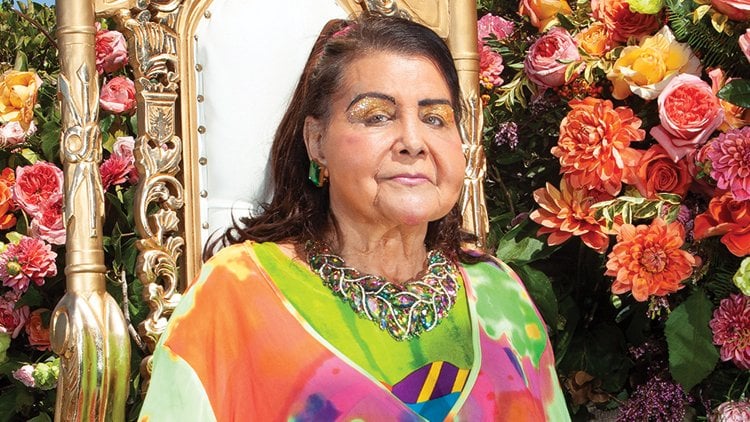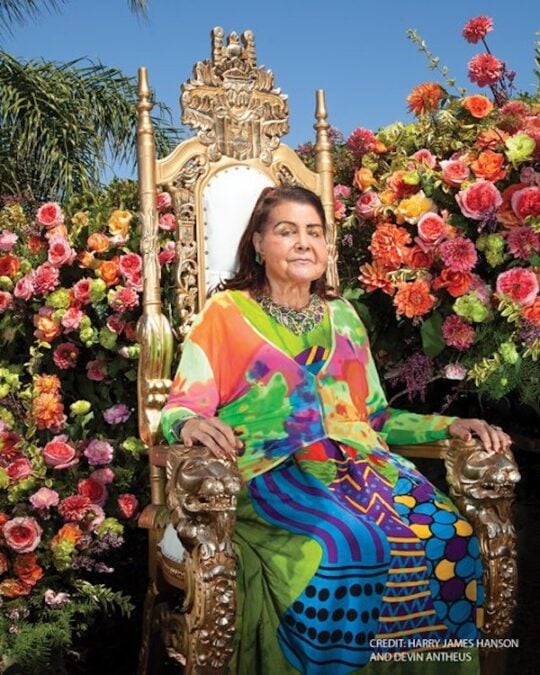
Sir Lady Java, a Black trans woman, was a star of the 1960s L.A. nightclub scene, performing with people like Redd Foxx, Sammy Davis Jr., Richard Pryor, and Don Rickles. She also was a trailblazer and civil rights activist. Photos: Harry James Hanson and Devin Antheus
In the 1960s, a legend was on the rise in Los Angeles. An exotic dancer, singer, comedian, drag performer, and Black trans woman by the name of Sir Lady Java was a star of the L.A. nightclub scene, performing with people like Redd Foxx, Sammy Davis Jr., Richard Pryor, and Don Rickles.
But she was also a revolutionary who challenged the city’s Rule No. 9, which banned “impersonation” of the “opposite sex.” The law was eventually struck down as unconstitutional.
For their new book, “Legends of Drag: Queens of a Certain Age,” authors Harry James Hanson and Devin Antheus traveled across America photographing and interviewing living legends of the drag community.
Sir Lady Java is a transgender pioneer who fought discrimination
For the most part, Hanson and Antheus sought to spotlight local legends rather than the most famous and recognizable queens, but in Sir Lady Java, they found someone who is both.
“Certainly, she represents the blueprint, I think, for showgirls who traveled the country and in her case, all of North America,” Hanson says. “And she really did have mainstream appeal in a way. We tend to associate that as sort of a recent phenomenon, but Java’s really the original ‘It Girl.’”
At first, Hanson and Antheus thought that landing Sir Lady Java for their book was a shot in the dark. They were told that she didn’t often give interviews, and after months of unsuccessful attempts at finding her, they were on the verge of giving up hope. That’s when magic happened.
“The day we arrived in L.A. for that shoot, we get a phone call from Java, basically being like, ‘Hi, I heard you’ve been trying to reach me,’” Antheus says. “It was a moment of total serendipity and synchronicity that just made us feel like it was divinely guided that we would eventually make a connection with her.”

When authors Harry James Hanson and Devin Antheus entered Sir Lady Java’s Los Angeles-area home, she was seated in her living room chair.
Meeting Sir Lady Java, the two authors realized she was every bit the legend in person that she is in tales.
“When we entered her home, she received us seated in a throne, which is just in her living room,” Hanson says. “It’s actually the throne that you see in her picture, it is her living room seating.”
“It really is that type of energy in her space,” Antheus adds. “Like she is the empress, seated in her throne receiving her accolades.”
“I feel like once Java is gone, is no longer with us, that she will be talked about the same way that Marsha (P. Johnson) is,” they continue.
“So often within outlaw movements and among revolutionaries, they do kill your heroes. Marsha was murdered. Her murder was never solved. And so again, I think that’s why it’s so important to celebrate Java while she is here.”
“Legends of Drag” certainly does that as well as celebrating 80 other legendary entertainers and performers from 16 cities. All the queens are photographed in new, contemporary portraits befitting of the royalty they are, along with lovingly written and detailed profiles on each of them.
This article originally appeared on Advocate.com, and is shared here as part of an LGBTQ+ community exchange between Q Voice News and Equal Pride.
